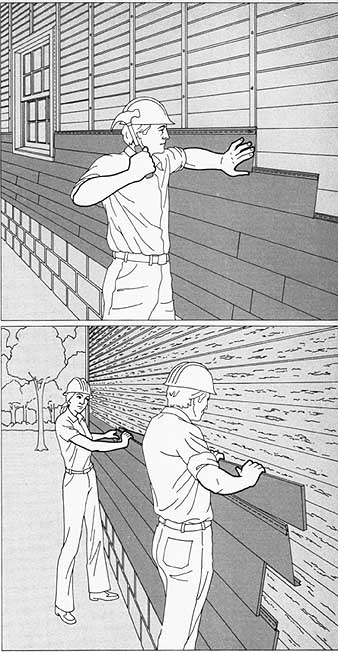Frequently a homeowner is sold the idea that re-siding his house will lower his fuel bills. This may be true—but only if the job is done with insulating backing. Even so, re-siding is not a substitute for a complete insulation system, since it adds only a limited amount of insulation.
If frequent peeling of paint is your reason for re-siding, first correct the moisture problem within the walls. Otherwise, moisture will increase and cause rotting of the old siding and the house framing.
There are two basic types of siding with insulation: one is a fiberboard backer in panels that are slipped into the air space in the hollow behind each strip of siding as the siding is installed. This type of insulation is used with metal and vinyl siding. The other kind of insulation is polystyrene laminated to the back of the siding; it comes with aluminum or steel siding only. Generally, the second type has a higher R value, and the polystyrene has the additional advantage of not retaining moisture as the fiberboard may. The insulating qualities of fiberboard backer and laminated polystyrene turned out to be an incidental benefit—they were developed to strengthen the siding and reduce the noise of expansion and contraction.

Some additional insulation is provided if new siding is attached over 1-by-3 furring strips nailed through the old siding to the studs inside the walls. The furring strips create an air space of about ¾ inch. Such furring strips must be pro vided for siding applied over existing asbestos shingles or stucco — they make an essential nailing surface for the new siding — and they are sometimes used on other types of walls.
Some siding contractors recommend first laying a thin sheet of perforated aluminum foil over the old siding—but it must be perforated, otherwise it acts as a vapor barrier on the wrong side of the wall, trapping moisture within the walls where it is not wanted. Like any additional layer of skin that you wrap around a house, it adds insulation, but again only a minimal amount unless the siding is put on airtight.
- Intro
- A Guide to the Complexities of Insulation
- Where to Insulate a House
- How Much Insulation Do You Have?
- Getting insulation into Finished Walls
- Some Pros and Cons of Insulated Siding
Next: